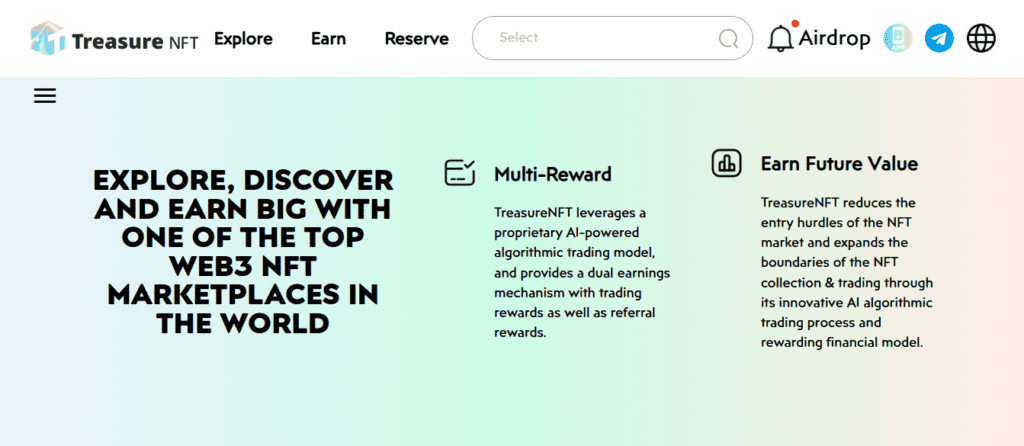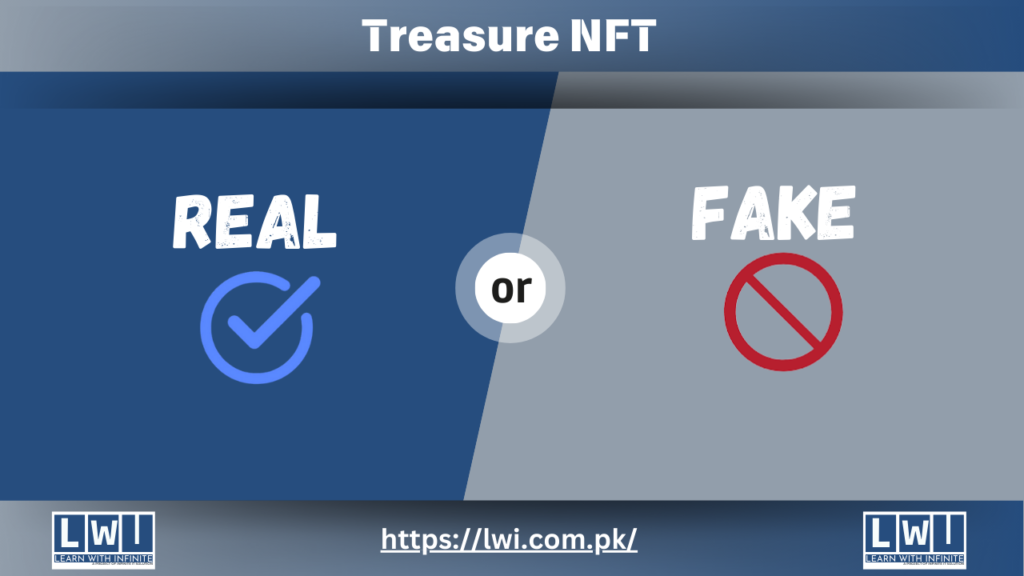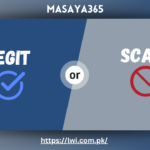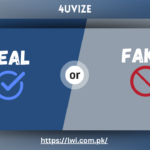Is Treasure NFT a legitimate platform or a scam? Unfortunately, the answer is clear: it’s a scam designed to deceive unsuspecting investors.
In this comprehensive guide, we’ll delve into the details of Treasure NFT’s deceptive practices, exposing the red flags and warning signs that should have alerted potential victims. We’ll explore the platform’s unrealistic promises, lack of transparency, and manipulative tactics, as well as discuss the devastating consequences for those who have fallen victim to this scam.
By understanding the intricacies of this dubious scheme, you can protect yourself from similar scams and make informed decisions in the world of NFTs and cryptocurrency.
What is Treasure NFT?
Treasure NFT presents itself as a Web3 platform designed to revolutionize NFT trading by offering a unique revenue platform. With its AI-powered algorithms, it aims to maximize earnings for users through dual mechanisms that promise both trading profits and referral bonuses.
The platform promotes high returns, making it an attractive investment opportunity, especially with its easy-to-earn selling point and USDT stablecoin payouts. Treasure NFT focuses on NFT trading but also relies heavily on recruitment and attracting new users to drive its business model, which could be a major red flag.
While it may seem promising, the selling point of guaranteed profits should raise questions about its long-term legitimacy, as NFT platforms with promises of high returns are often associated with high risks.
Key Features and Claims of Treasure NFT
The platform highlights the following features to attract users:
- AI-Powered Trading System: Treasure NFT claims to employ an AI-powered algorithm that makes trading decisions based on real-time market analysis, promising higher profits for users.
- Dual Earnings Mechanism: Users can earn rewards not only through their NFT trading but also by referring new users to the platform. These bonuses are presented as additional income streams.
- Multi-Language Platform: Treasure NFT advertises support for several languages, including Chinese, English, and Turkish, aiming to capture a global user base.
- High Return on Investment (ROI): The platform promises users a chance to earn up to 30% per month, an offer too good to be true.
While these features might sound appealing to NFT enthusiasts, they hide the underlying truth: Treasure NFT is nothing more than a Ponzi scheme.

Red Flags That Prove Treasure NFT is a Scam
Several critical red flags suggest that Treasure NFT is operating as a fraudulent platform, designed to exploit its users and steal their money. Let’s break down the most significant warning signs that indicate the platform’s deceptive nature.
1. Lack of Transparency and Anonymous Team
One of the major warning signs that Treasure NFT could be a scam is the lack of transparency regarding its platform and investment opportunity. Legitimate platforms typically provide clear information about the founders, developers, and the company structure, ensuring that users can trust the leadership behind the project.
However, Treasure NFT lacks detailed insights into its team and professional credentials, leaving many questioning the experience and legitimacy of those involved.
When a platform hides or fails to disclose clear information, it can be a red flag for potential scams. The anonymous team behind Treasure NFT may attempt to deceive users, making it impossible to hold anyone accountable if things go wrong.
2. Unrealistic Promises of High Returns
A significant warning sign for Treasure NFT is its outrageous promises of high returns, often claiming up to 30% per month, which is an indicator of Ponzi schemes. Users are enticed to invest large sums of money with promises of unrealistically high returns, something no legitimate investment can guarantee.
This kind of offer is frequently associated with Ponzi schemes, where the profits for older users are paid using the user deposits of new users. In the volatile world of NFTs and cryptocurrencies, high returns often lack a solid risk assessment or evidence to back them up.
The absence of legitimate trading and real investments makes Treasure NFT seem like a scheme meant to engage users only long enough to deceive them. The Ponzi scheme behavior is evident when the platform focuses on attracting more new users while offering no real value or sustainable profits.
3. Fake Reviews and Fabricated Testimonials
A common tactic used by Treasure NFT is to create an illusion of credibility by posting fake reviews and fabricated testimonials. These success stories and glowing endorsements are often found on social media, app stores, and review websites to attract users.
However, many of these testimonials are either AI-generated or manipulated to make the platform appear legitimate. Such tactics are employed to build a positive reputation that does not reflect the true user experience, often deceiving potential investors into believing the platform is trustworthy.
Google Play Store:
On the Google Play Store, Treasure NFT boasts an inflated rating of 4.6/5 based on over 6,000 reviews, which initially seems impressive. However, a deeper dive reveals the questionable nature of these reviews, as many appear to be fabricated with generic and vague language, lacking genuine user experiences.
The positive reviews often contain identical phrases, a classic sign of review manipulation, aimed at boosting the platform’s credibility. Despite the high rating, red flags emerge when examining negative reviews, which are often hidden among the glowing feedback.
Users report consistent issues, such as accounts frozen without clear explanations, leaving them unable to access funds or facing locked accounts resulting in the loss of funds. Withdrawal failures, prolonged delays, and failure messages are common complaints, with many encountering unresponsiveness from support and no clear instructions on resolving their issues.
These recurring issues indicate fraudulent practices, making the platform appear legitimate while in reality, it’s manipulating users through scam-driven feedback, further compounding the lack of transparency.
Apple App Store:
On the Apple App Store, Treasure NFT holds a 3.8/5 rating based on reviews that paint a concerning picture of dissatisfaction among users. A primary source of frustration lies in the withdrawal process, with many users experiencing delays in accessing their funds.
The platform’s lack of transparency has left users feeling uncertain about their money, with some even fearing that their funds may be lost or stolen. Reports of froze balances without warning are also prevalent, exacerbating the situation.
Customer support has been heavily criticized for its delayed responses and failure to resolve unresolved issues, offering no meaningful assistance through limited communication channels.
This has led to a flood of user complaints, raising serious concerns about the platform’s legitimacy and further solidifying the view that it is a scam.
Trustpilot:
On Trustpilot, Treasure NFT’s profile initially appeared bolstered by suspiciously high 5-star reviews, designed to inflate its public image and project a false sense of credibility. These fraudulent reviews, though initially convincing, were soon uncovered as fake reviews that manipulated user experience.
Many of the positive feedback entries came from accounts with little to no history, using overly optimistic phrasing and making exaggerated claims about high returns and user satisfaction, which are common tactics of review manipulation.
As the manipulated reviews were exposed, it became clear that the platform had orchestrated this scheme to create a legitimate appearance, while in reality, it operates as a Ponzi scheme.
The loss of funds, account freezes, and inability to access customer support were key negative reviews left by real users, further highlighting the scam operations and tactics used to lure in victims, leaving them with an inflated reputation based on manipulated reviews.
These fake reviews help the platform manipulate its reputation and make it seem like a legitimate and trustworthy service, when in reality, it is far from it.
4. Withdrawal Issues and Account Freezing
One of the most concerning complaints among users of Treasure NFT platforms is the inability to withdraw funds after they have accumulated earnings. Many individuals who have trusted the platform with their invest money face the frustration of not being able to access funds.
In some cases, their accounts frozen without any valid explanation or prior warning. The lack of responsive customer support only amplifies the problem, leaving users feeling helpless and scammed.
This is a serious red flag that any potential investor should watch out for, as it directly impacts your ability to access what you rightfully own.
Common Withdrawal Problems:
A frequent issue that users face when trying to withdraw their earned funds on platforms like Treasure NFT is that their accounts get frozen or locked, preventing them from accessing their significant rewards.
Scammers often use this tactic to stall or block withdrawals, making it difficult for members to recover their funds. In many cases, the platform may stop processing withdrawals, causing long delays and errors when users attempt to request a withdrawal.
Some users report receiving unjustified fees or hidden charges that further complicate the withdrawal process. This kind of experience is common among those who have been recruiting new members or investing, signaling a potential scam.
These withdrawal issues indicate that the platform does not actually have the ability or intention to pay its users, further confirming that it operates as a scam.
5. Ponzi Scheme Tactics: Emphasis on Recruitment
A major Ponzi scheme tactic often seen in scams like Treasure NFT is the platform’s structure, which heavily focuses on recruitment rather than legitimate trading. Users are promised high user rewards for bringing in new members, and many are enticed by the allure of referral bonuses.
However, the underlying issue is that this model relies on those who recruit others to sustain its operations, creating a cycle that is ultimately unsustainable.
New investments are used to pay out older users, with no real trading or value creation happening behind the scenes, leaving the system on the brink of collapse.
Ponzi Scheme Indicators:
One of the key indicators that Treasure NFT may be operating as a Ponzi scheme is the heavy emphasis on referral bonuses and recruiting others to join the platform. Users are often encouraged to bring many people to earn larger rewards and commissions, making the platform appear legitimate.
However, this pressure to keep recruiting new members can create an unsustainable cycle, as new investments are used to pay rewards to earlier participants. The platform may even freeze accounts or lock funds for those who fail to meet the specified number of referrals, preventing them from accessing their funds.
This kind of structure ultimately collapses when the influx of new members slows, leaving non-recruiters to lose their investments.
This recruitment-driven model has nothing to do with legitimate investments and is the primary hallmark of a fraudulent platform.
6. Misleading Marketing and Fabricated Success Stories
One of the biggest red flags that Treasure NFT is a scam lies in its misleading marketing strategies. Many platforms rely on sponsored content and influencers to promote their services on platforms like YouTube, TikTok, and Facebook, but often these promotions are far from legitimate.
The success stories shared are frequently fabricated or exaggerated, designed to convince new users to start depositing funds.
These testimonials are often biased or the result of paid promotion, distorting the reality of what the platform offers and making false promises about how profitable the investments can be.
7. Poor Customer Support and Lack of Communication
A clear indicator that Treasure NFT is a scam is the poor customer support that users often face when dealing with issues like withdrawal problems or account freezes. Many complaints highlight the lack of real customer service, with slow response times stretching for days or even weeks.
Often, users are met with generic, automated messages instead of personalized assistance, leaving their concerns unresolved. Without proper follow-up or a dedicated support team, the platform fails to provide the essential contact information that any legitimate platform should.
This absence of dedicated customer support is a classic tactic to deceive users into thinking their problems aren’t a priority.
8. Inconsistent Information and Technical Glitches
Inconsistent information is another red flag that suggests Treasure NFT is a fraudulent platform. Users often report discrepancies in their accounts, including missing balances or errors in trading records.
These technical glitches frequently lead to the disappearance of funds, further complicating the situation. With a poorly managed system, users are left confused, unable to trust the platform, and sometimes even prevented from accessing funds altogether.
This chaotic environment is designed to create confusion, making it harder for users to identify when they are being scammed.
9. Limited Information About the Platform’s Technology
When there is limited information available about the underlying technology behind a platform like Treasure NFT, it raises a significant red flag. The lack of clarity on security measures, trading algorithms, and AI models used to operate the platform is concerning, as these details are essential to ensure trust and safety.
A legitimate NFT marketplace would openly disclose its security protocols and technical infrastructure to build confidence among users. The absence of such transparency makes it nearly impossible to verify the platform’s legitimacy, leaving users vulnerable to potential scams.
What to Do if You’ve Been Scammed by Treasure NFT?
If you’ve fallen victim to Treasure NFT or any other scam platform, it’s crucial to act quickly. Scammers rely on the lack of action or knowledge of their victims to perpetuate their fraudulent schemes.
Here’s what you can do if you’ve already invested in Treasure NFT:
1. Gather Evidence:
If you’ve been scammed by Treasure NFT, the first crucial step is to gather evidence of your investment and all related documentation. This includes screenshots of your account, balances, trades, and deposits, as well as any communications you’ve had with customer support.
Be sure to capture transaction history, withdrawal requests, and responses from the platform. Additionally, collect emails, messages, and marketing materials that highlight claims made by the platform, especially those promising high returns or guaranteed profits.
This evidence will be vital for investigations and filing formal reports with the relevant authorities.
2. Contact Customer Support (If Possible):
If you’ve been scammed by Treasure NFT, one of the first actions to take is to try to contact customer support. However, be cautious, as the response you receive may be generic or unhelpful.
Despite this, it’s still important to make attempts to communicate with them, documenting all replies and keeping a record of your interactions.
Ensure that you provide evidence of your case, including details about your account, transactions, and any issues with withdrawals or balances, as this may be useful if you need to escalate the matter.
3. Report the Scam to Authorities:
If you’ve fallen victim to Treasure NFT, it’s crucial to report the fraudulent platform to the relevant authorities in your country. In Pakistan, you can reach out to consumer protection agencies like the Competition Commission of Pakistan (CCP).
For those in the United States, financial regulatory authorities such as the Securities and Exchange Commission (SEC) or internet crime agencies like the FBI and the Internet Crime Complaint Center (IC3) are key contacts.
Similarly, in the UK, the Financial Conduct Authority (FCA) handles such matters. Additionally, you can report the scam to consumer protection bodies and internet crime agencies such as Europol in Europe.
Don’t forget to alert social media platforms like Facebook, Instagram, YouTube, and TikTok, especially if the scam involves influencers or fraudulent content on these systems.
4. Reach Out to Fellow Victims:
If you’ve been affected by Treasure NFT, connecting with other victims can be an effective way to share your experiences and gain insight into how others are dealing with similar issues.
Communities on platforms like Reddit and Twitter often host scam-specific forums and threads where victims can voice their concerns and offer tips on navigating the situation.
By joining these groups, you increase your chances of finding useful advice and, in some cases, may even be able to organize collective action against the scammers. Such efforts can amplify your voice and potentially help others avoid falling into the same trap.
5. Check for Legal Action:
If you’ve lost funds due to Treasure NFT, exploring legal avenues could be your next step. Consulting a lawyer specializing in online fraud and consumer protection can help you understand your options for holding the platform and scammers accountable.
One possibility is pursuing a class-action lawsuit with other victims, which can increase the chances of recovering your funds while also sending a strong message to those responsible for the scam.
Be sure to gather all relevant evidence and seek legal guidance to determine the best course of action.
6. Learn from the Experience:
To recover from the loss of funds and prevent falling for future scams, it’s crucial to reflect on the warning signs that may have been overlooked. Unrealistic promises, such as high returns with little risk, are common tactics used by scammers.
Ensure the platform you invest in offers clear, transparent operations, including a team that is visible and responsive via customer support. Check for registered businesses and confirm that withdrawal processes are straightforward.
Doing thorough research by reviewing user reviews and consulting financial bodies will help you avoid questionable platforms.
By learning from your experience, you can make more informed decisions, recognizing signs like excessive recruitment pressure and lack of transparency in business models.
How to Protect Yourself from NFT Scams
With the rise of NFTs and digital currencies, more scams are emerging that seek to exploit people who are new to the space or not fully informed. To help you avoid falling victim to a scam like Treasure NFT, here are several proactive measures you can take to protect yourself:
1. Do Your Research
Before investing in any new platform, always conduct thorough research. Start by reviewing platform reviews and user reviews on trusted websites like Trustpilot, Reddit, or cryptocurrency-specific forums.
Look out for scam alerts or reports of known scams on sites like the FTC (Federal Trade Commission) and the Better Business Bureau (BBB).
Investigate the company background, checking the legitimacy of the platform’s founders and team, and ensure the business registration information is clear and accessible. This process helps confirm the platform’s trustworthiness and prevents falling for fraudulent schemes.
2. Verify the Platform’s Claims
When exploring an NFT platform, be wary of scam platforms that make unrealistic promises such as high returns within a short period. If something seems too good to be true, it often is. Always assess the legitimacy of the platform’s claims, particularly those related to returns and withdrawal policies.
Pay close attention to any mention of guaranteed profits, as this is a major red flag. A legitimate platform will have transparent withdrawal processes without hidden fees or withdrawal issues.
If you experience difficulties withdrawing your earnings or notice others complaining about similar issues, this is a clear warning sign that the platform may not be trustworthy.
3. Use Secure Wallets and Exchanges
When trading NFTs and cryptocurrencies, it’s crucial to use secure wallets and trusted exchanges. Popular options like MetaMask, Coinbase, and Binance have built strong reputation due to their advanced security features.
Avoid using unfamiliar platforms without proper security protocols, as they can expose you to unnecessary risks. Always double-check the security protocol of any platform you plan to use, ensuring that your assets are protected from potential scams.
4. Never Share Your Private Keys
To protect yourself from scams, always keep your private keys and seed phrases safe and never share them with anyone. These are the keys to your crypto wallets, granting access to your secret assets.
Revealing them could lead to unauthorized access and loss of your valuable NFTs or cryptocurrencies. Treat your private keys like a password and keep them secure from any potential scam attempts.
5. Keep Software Up to Date
To safeguard against scammers and phishing attacks, ensure that your security software is always up to date. Enable two-factor authentication (2FA) on your accounts to add an extra layer of protection.
By doing so, even if your login details are compromised, the chances of unauthorized access are significantly reduced, protecting your valuable assets from potential fraud. Regularly updating your security measures is one of the best defenses against evolving scam tactics.
6. Be Cautious of Unsolicited Messages
Always be wary of unsolicited messages you receive through email, social media, or direct messages. Scammers often reach out with exclusive offers or highly profitable NFT projects that promise significant returns.
These messages can appear legitimate, but it’s crucial to verify the authenticity of any message or links before engaging. Avoid clicking on links from unknown sources or suspicious sources, as they may lead to phishing websites designed to steal your personal information or crypto assets.
Stay cautious and always do your research before responding to unsolicited offers.
7. Join Community-Based Platforms
When investing in NFTs, it’s important to connect with community-based platforms that are established and have a reputation for being legitimate. Platforms like Discord and Telegram offer vibrant, community-driven ecosystems where real users share their experiences and discuss potential NFT platforms.
Engaging in these spaces can help you spot red flags from scammers and avoid falling victim to fraudulent schemes. A strong community presence is a good indicator of the platform’s credibility, so learning from others and keeping an eye on social media can protect you from making costly mistakes.
Conclusion: Avoiding NFT Scams and Investing Smartly
In the rapidly evolving world of Web3 and NFT marketplaces, the emergence of Treasure NFT has attracted significant attention, but questions about its legitimacy continue to rise. The platform, with its polished marketing and enticing promises of high returns, might seem like a golden opportunity for investors seeking profitable investments.
However, a closer look reveals red flags suggesting that Treasure NFT could be a scam. Many users have reported withdrawal issues and poor customer support, which are often telltale signs of fraudulent platforms that disguise themselves as legitimate operations.
Despite fake testimonials and fabricated reviews that paint an overly positive picture, the recruitment-driven model and unrealistic promises raise concerns about its true nature. Some experts argue that the platform’s approach to trading, especially its reliance on referral bonuses and a Ponzi scheme-like structure, is highly suspicious.
These factors should make potential investors cautious and vigilant when considering whether to participate in the platform. If you’re thinking about NFTs or other digital assets on Treasure NFT, be sure to gather evidence and consult appropriate authorities to avoid being misled.
Stay informed and make informed decisions to protect yourself from the deceptive practices that are unfortunately common in this space.
Key Takeaways:
- Treasure NFT is a scam that operates using Ponzi scheme tactics, where rewards are paid using the investments of new users.
- Be cautious of unrealistic promises of high returns, lack of transparency, and unverified testimonials.
- Always verify the legitimacy of any platform, conduct thorough research, and use secure wallets and exchanges.
- If you’ve been scammed, gather evidence, report to authorities, and consider joining victim communities to increase awareness.
By staying informed and taking the right precautions, you can protect yourself and others from falling victim to scams in the NFT space and beyond.
Check Similar Crypto Platform Review: Immediate Mobic 04 Review: Real or Fake?
Frequently asked Questions
Is Treasure NFT a legitimate platform?
No, Treasure NFT is not a legitimate platform. It is a scam designed to deceive and defraud users. Its unrealistic promises of high returns, lack of transparency, and withdrawal issues are clear red flags that indicate fraudulent activity.
How does Treasure NFT scam work?
Treasure NFT operates as a Ponzi scheme. It lures users with promises of high returns and referral bonuses, but the profits are paid from the investments of new users rather than actual trading or business operations. The platform’s focus on recruitment over genuine trading is a major red flag.
Can I recover my funds if I’ve been scammed by Treasure NFT?
Recovering funds after being scammed can be challenging, but it’s not impossible. Reporting the scam to authorities and seeking legal advice may increase your chances of recovering your losses. However, it’s important to be realistic and understand that recovering all your funds may not always be feasible.
Is there any guarantee of profits on Treasure NFT?
No, there is no guarantee of profits on Treasure NFT. In fact, the platform’s focus on recruitment and unrealistic promises of high returns are strong indicators of a scam. It’s crucial to remember that investment in any platform, especially those with high-risk claims, carries inherent risks.
How can I report a scam like Treasure NFT?
To report a scam like Treasure NFT, contact your local authorities or financial regulatory bodies. You can also report it to online platforms like the Internet Crime Complaint Center (IC3) or the Federal Trade Commission (FTC).
Should I invest in Treasure NFT?
Absolutely not. Given the numerous red flags and evidence of fraudulent activity, investing in Treasure NFT is highly risky and could lead to significant financial losses. It’s crucial to prioritize safety and avoid platforms that lack transparency and exhibit signs of scams.
What are the consequences of investing in a scam like Treasure NFT?
Investing in a scam like Treasure NFT can lead to significant financial losses, as there is no guarantee of recovering your funds. Additionally, it can damage your financial reputation and leave you vulnerable to future scams.








good JOB . YOU HAVE ANY TYPE OF LICENCE
What do you mean by that?